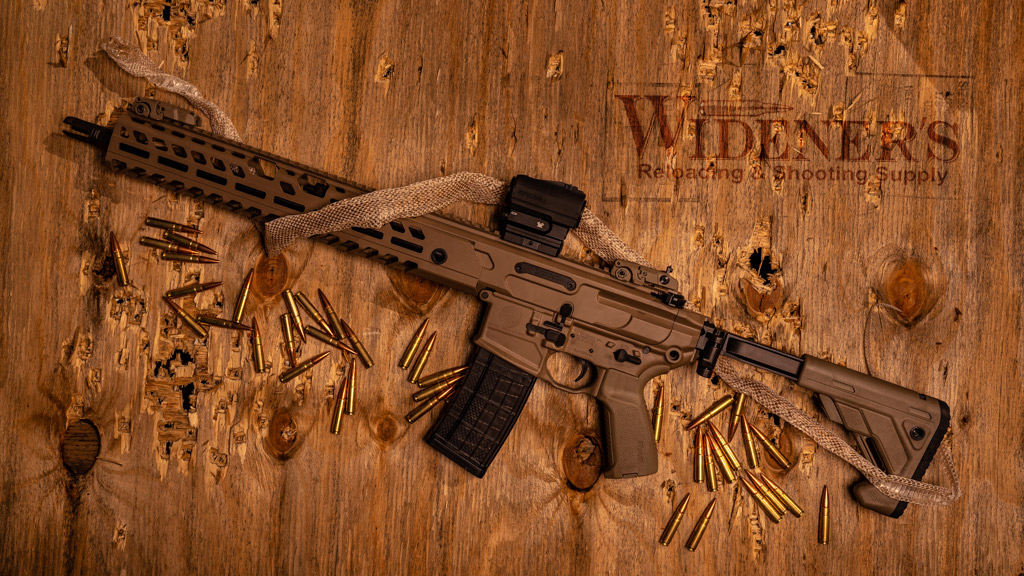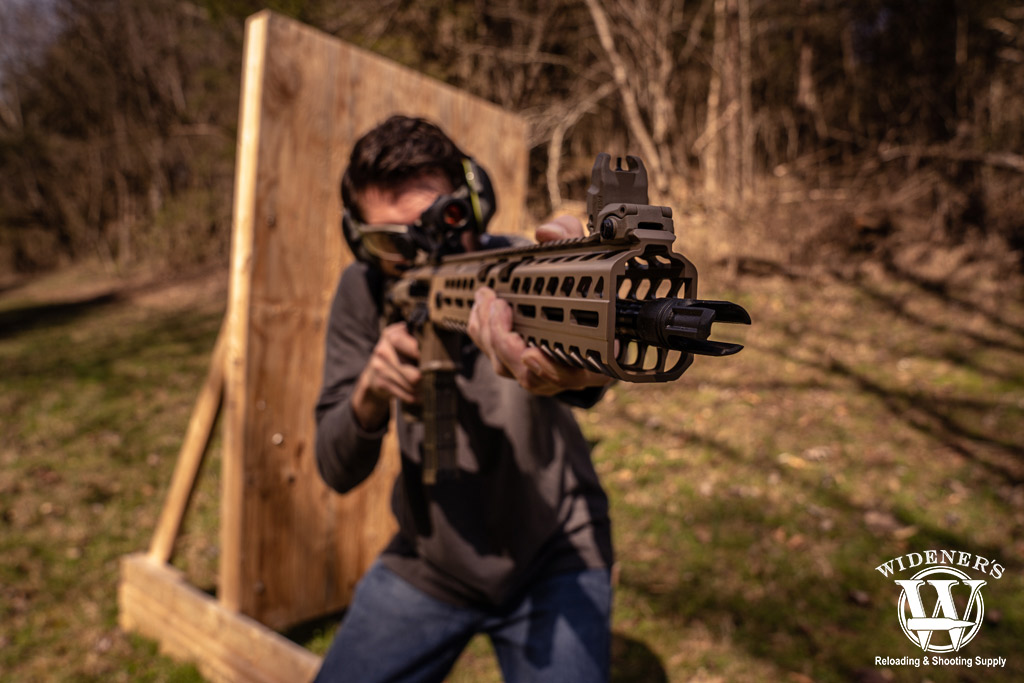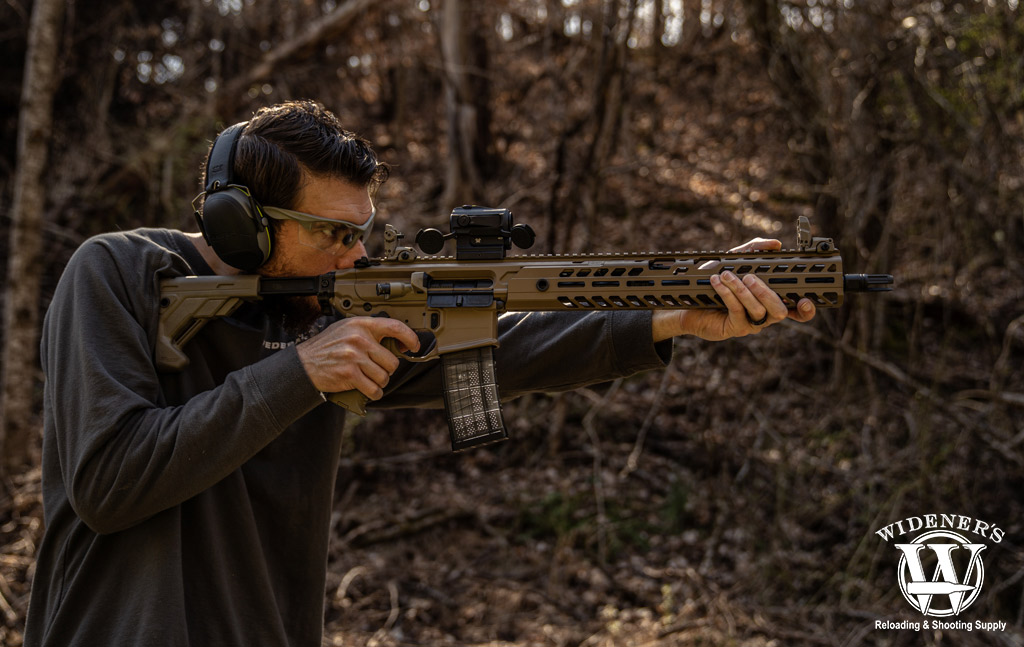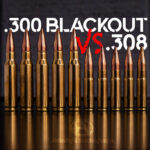

By Guy J. Sagi
A mystique surrounds the .300 BLK (AAC Blackout), and it overshadows this utility player’s ability to deliver All-Star numbers in a variety of roles. 300 Blackout’s effective range can stretch quite a bit depending upon your goals. With supersonic rounds for maximum muzzle velocity to subsonic loads that quiet the roar by slowing the pace. Regardless of the position it plays, the .300 BLK’s performance often hinges on finding the best barrel length and load combination for the distance you have in mind.
300 Blackout History
Advanced Armament Corporation (AAC) started working on the cartridge in 2009 after a U.S. military organization requested the development of a .30-caliber round capable of running in an M4. Remington Defense was part of the effort, which was no easy task because it included a requirement that it run in standard AR-15 magazines.
The companies didn’t start completely from scratch, though. There’s no shortage of creativity among enthusiasts when it comes to the search for that “holy grail” of loads. Wildcatters—gun owners who fabricate and reload cartridges of their own design—experimented for years with a .30-caliber AR-15-friendly version.
Say It With A Whisper
The .300 Whisper developed by J.D. Jones, tailored for heavy projectiles that do not break the sound barrier (subsonic), was probably best known at the time and popular enough that the term wildcat does not apply. There were also efforts to introduce the AK-friendly 7.62×39 mm (also .30-caliber) to modern sporting rifles, but many of them ran into the cartridge’s case geometry challenge, where feeding can become a concern.
It didn’t take long for engineers at two of the industry’s finest to solve the problem, though. The Sporting Arms and Ammunition Manufacturers Institute (SAAMI) approved and published industry standards and specifications for the .300 BLK on Jan. 17, 2011. SAAMI creates and publishes industry standards for safety, interchangeability, reliability and quality, as well as coordinates technical data for agencies, enthusiasts and manufacturers.
.223 Rem VS .300 BLK: Similar But Different
The case heads are identical on 223 Rem and 300 BLK ammo, which makes the bolts on both interchangeable in many cases. Both use AR-15/M4 magazines and cartridge-carrying capacity is identical.
The kissing cousins resemble twins at a distance, but the similarities end at projectile girth. The .300 BLK bullets are 0.30 inch in diameter (7.62 mm) and the .223 Rem (5.56 mm) is 0.224 inch. A whole new world of hunting and target-shooting options open with that difference, a fact sometimes obscured by the cartridge’s subsonic and military roots.
Load Diversity

Hunting, home defense, and competition style shooting, the .300 AAC Blackout does it all.
Widener’s offers a variety of loads, in bullet weights that vary from 110- to 220-grains. Versions include FMJ, with or without boattails, open tip match or open tip flat base and cartridges with Hornady’s SST V-Max, Sub-X or hollow points.
The military roots still show in the selection subsonic loads, although it’s neighborly friendly to ditch that familiar “crack” as the bullet breaks the sound barrier—whether it’s quieted at the muzzle by a suppressor, or not. Part of today’s confusion over 300 Blackout effective range and barrel length often stems from this flavor.
.300 Blackout Subsonic Ammo
The speed of sound is 1,275 feet per second (fps) at sea level and varies slightly with temperature and atmospheric pressure. Planes that increase their velocity until it reaches and exceeds that mark generates a sonic boom. Bullets make a similar noise, although not nearly as earth rumbling, that is very recognizable and isn’t always advantageous in combat.
Suppressors minimize the chances of a sniper being located by sound, but they simply reduce audible emissions from their firearm’s muzzle end, not a projectile’s characteristic “crack.” To avoid it from giving a shooter’s position, subsonic .300 BLK loads use heavier bullets and adjusted powder charges—often tailored for a complete burn in a short barrel.
The Hornady Sub-X 190-grain load, for example, exits the muzzle of a 16-inch barrel at 1,050 fps, where it is carrying 465 foot-pounds of energy. That’s serious power up close, but that slow speed and heavyweight takes a toll at 500 yards. There its drop is more than 30 feet (with a 100-yard zero) and energy drops to 309 foot-pounds. Even at 300 yards holdover is nearly 9 feet.
Any discussion on the effective range is a minefield full of opinion best tiptoed over by indicating those figures make the .300 BLK at 300-yard shot territory most comfortable for veteran shooters. The well-known terminal performance of that Sub-X bullet, however, does make the load an ear-friendly option for some who hunt at relatively short distances.
Keep in mind, the odds are good that powder mix completely burns in that 16 inches of test barrel. CQB isn’t a place where bright flashes coming out of a barrel are an advantage, so using a 22-inch tube won’t help much, if at all.
300 Blackout Effective Range – Supersonic Ammo
On the other end of the spectrum are loads that send their bullet traveling faster than the sound barrier. They are flatter shooting and, with less time in flight, less prone to the effects of wind. They lack the mass to carry a proportionate level of energy at downrange, though.
For an apples-to-apples comparison, the Hornady V-Max 110-grain load (also zeroed at 100 yards through 16 inches of barrel) has a muzzle velocity of 2,375 fps. This .30-caliber bullet at 500 yards drops by less than 9 feet (21 less than the subsonic version) and it carries 362-foot-pounds of energy there. At 300, holdover is only 23.4 inches.
The numbers make it obvious it’s flatter shooting than the subsonic load. Conversely, its lightweight projectile bleeds energy downrange, the reason Hornady lists it as a target shooting and varmint hunting load.
Best Barrel Length For 300 Blackout

What’s the magic number for .300 BLK barrel length? It depends on the intended purpose of the rifle.
A need for a nimble, stealthy firearm capable of stopping an adversary at moderate to short distances is one of the reasons for developing the .300 BLK. Part of that equation is the use of subsonic loads with heavy bullets and powder that burns completely in that abbreviated barrel. The odds are good enthusiasts will see diminishing, if any, return for running subsonic cartridges through 18-inch barrels or longer. Only specific barrel and ammo testing will tell, though.
For varmint hunters, competitors and gun owners practicing at distance, supersonic .300 BLKs are big medicine. Lack of wind drift alone is a decided advantage, along with a flatter trajectory.
As for velocity gained with added barrel length (from loads not tailored for subsonic), Hornady’s website FAQ explains there is no way to simply calculate gain or loss because due to variations in individual firearms, “…but on average, velocity gains or losses will be approximately 25 or 35 feet per second per inch of barrel difference…To truly measure performance, the load should be tested over a chronograph.”
.300 BLK Performance
Barrel Length & 300 Blackout Effective Range
Although the 300 Blackout’s effective range depends on the shooter and application, the chart above provides rough guidelines for consideration. In the chart, bold-faced entries indicate the last distance at which each Hornady load drops less than 5 feet in different length barrels—for those uncomfortable dialing in or holding over 60 inches. If downrange energy is a critical consideration, the last yardage that still carries at least 400-foot-pounds is italicized.
| Ammo | Barrel Length | 200 Yards | 300 Yards | 400 Yards | 500 Yards |
|---|---|---|---|---|---|
| Hornady 110gr G-Max Full Boar (2,350 FPS At Muzzle) | 10 | -8/692 | -28.4/530 | -64.9/409 | -122.2/324 |
| 12 | -7.5/734 | -26.6/563 | -60.9/433 | -114.9/340 | |
| 16 | -6.6/824 | -23.5/634 | -53.9/486 | -101.8/377 | |
| Hornady 125gr HP American Gunner (2,175 FPS At Muzzle) | 10 | -9.7/672 | -33.9/522 | -76.5/412 | -142.7/337 |
| 12 | -9/716 | -31.6/556 | -71.1/436 | -133.9/353 | |
| 16 | -7.9/810 | -27.7/629 | -63/489 | -118.1/389 | |
| Hornady 190gr Sub-X Subsonic (1,050 FPS At Muzzle) | 10 | -47.6/280 | -147.5/264 | -303/249 | -518.2/235 |
| 12 | -41.8/316 | -130.1/296 | -267.9/278 | -458.7/262 | |
| 16 | -33.4/384 | -104.9/355 | -217.7/331 | -375.1/309 |
*Calculations are estimates using Hornady’s on-line ballistic calculator and adjusted by the company’s estimate of between 25 and 35 fps loss per inch of shortened barrel length (30 fps subtracted per inch for the purposes of this chart). Results are in inches/foot-pounds of energy and based on a 100-yard zero with the scope 1.5 inches above the bore.
Purpose & Performance

Subsonic and supersonic ammo both have features that pair well with a variety of barrel lengths.
Selecting the best barrel length for the .300 BLK can be a double-edged sword. At 10-inches, muzzle velocity hasn’t reached its peak. Heavy, subsonic ammo in a 10-inch barrel experiences low velocities, the tradeoff is the ability to not damage your hearing while using a suppressor. Supersonic ammo in a 10-inch barrel retains rifle caliber velocities but experiences greater bullet drop at distances.
At 16-inches, muzzle velocities are near their peak. Heavy grain subsonic bullets are barely able to retain true subsonic performance. Supersonic ammo retains rifle caliber velocities, has increased effective distance, and bullet drop is greatly reduced. The 16-inch barrel also delivers greater energy on impact regardless of the ammo type.
Barrel twist rate matters as well, it’s another factor to consider when choosing barrel length and determining 300 Blackout effective range with your rifle.
A 1:8 twist works best with the light-weight supersonic rounds. For those with suppressors, the 1:7 twist favors the heavier subsonic rounds.
If you didn’t before, you can now easily see there are many factors to consider when selecting the best barrel length for your .300 BLK rifle and determine the effective range of the caliber. As always, train with your rifle and make sure you know your intended purpose before you buy.


